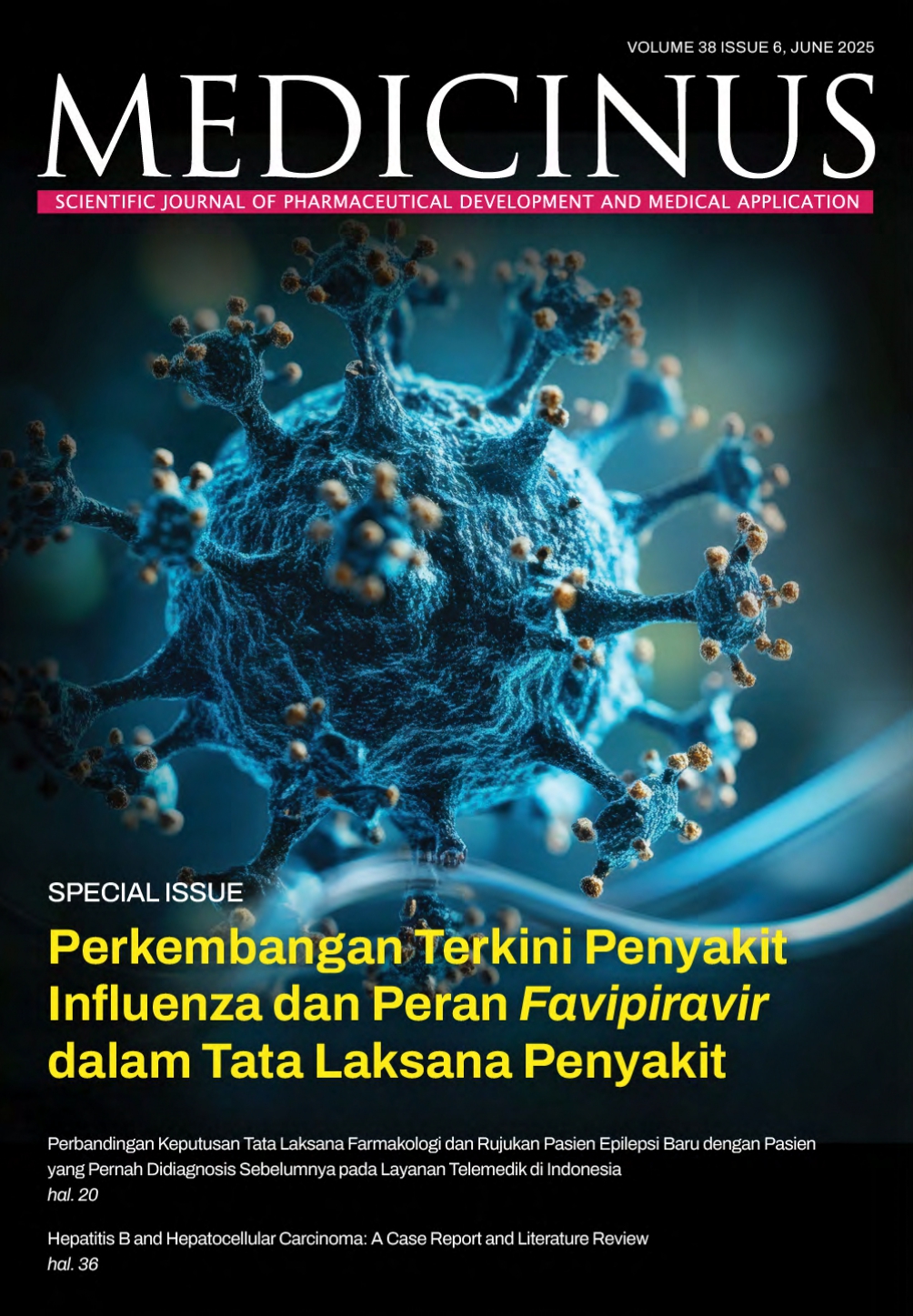Di Balik Peradangan: Tinjauan tentang Peran Antinosiseptif Sel Imun dalam Modulasi Nyeri
DOI:
https://doi.org/10.56951/zxrk2y26Kata Kunci:
antinosiseptif, analgesik, neuroimunologi, nyeri, peradangan, sel imun, sel T regulatorikAbstrak
Sel-sel imun telah lama diposisikan sebagai antagonis dalam fisiologi nyeri. Hal ini karena pada masa lampau sel-sel tersebut dipandang melalui lensa yang terbatas pada peradangan dan amplifikasi nosiseptif. Namun, penelitian yang muncul membentuk ulang narasi ini. Artikel ini membeberkan peran sel imun yang terus berkembang — bukan semata-mata sebagai molekul proinflamasi, melainkan sebagai partisipan yang beraktivitas dalam modulasi dan penekanan nyeri. Penemuan-penemuan terbaru dalam neuroimunologi menjelaskan dialog molekuler yang kompleks antara mediator imun dan jalur nosiseptif. Penekanan khusus diberikan pada kontribusi sel T regulatorik, subtipe makrofag, dan sel glial dalam mengurangi sinyal nosiseptif. Mekanisme antinosiseptif yang dimediasi oleh sitokin, mediator turunan lipid, dan komunikasi dari imun ke neuron dikaji bersama potensi translasionalnya dalam terapi nyeri kronis. Dengan mengubah peran sel imun menjadi tokoh sentral dalam proses analgesik, pergeseran paradigma terungkap, menyerukan pendekatan integratif dalam penelitian dan terapi nyeri.
Unduhan
Referensi
1. Lindsay NM, Chen C, Gilam G, Mackey S, Scherrer G. Brain circuits for pain and its treatment. Science Translational Medicine. 2021;13(619):eabj7360.
2. Jang K, Garraway SM. A review of dorsal root ganglia and primary sensory neuron plasticity mediating inflammatory and chronic neuropathic pain. Neurobiology of Pain. 2024;15:100151.
3. Pinho-Ribeiro FA, Verri Jr WA, Chiu IM. Nociceptor sensory neuron–immune interactions in pain and inflammation. Trends in Immunology. 2018;38(1):5–19.
4. Yang JX, Wang HF, Chen JZ, Li HY, Hu JC, Yu AA, et al. Potential neuroimmune interaction in chronic pain: A review on immune cells in peripheral and central sensitization. Frontiers in Pain Research. 2022;3:946846.
5. Wang ZW, Chen L, Hao XR, Qu ZA, Huang SB, Ma XJ, et al. Elevated levels of interleukin-1β, interleukin-6, tumor necrosis factor-α and vascular endothelial growth factor in patients with knee articular cartilage injury. World Journal of Clinical Cases. 2019;7(11):1262–9.
6. Bennett DL, Clark AJ, Huang J, Waxman SG, Dib-Hajj SD. The role of voltage-gated sodium channels in pain signaling. Physiological Reviews. 2019;99(2):1079–151.
7. Nayer B, Tan JL, Alshoubaki YK, Lu YZ, Legrand JMD, Lau S, et al. Local administration of regulatory T cells promotes tissue healing. Nature Communications. 2024;15:7863.
8. Garland EF, Hartnell IJ, Boche D. Microglia and astrocyte function and communication: what do we know in humans? Frontiers in Neuroscience. 2022;16:824888.
9. Komai T, Inoue M, Okamura T, Morita K, Iwasaki Y, Sumitomo S, et al. Transforming growth factor-β and interleukin-10 synergistically regulate humoral immunity via modulating metabolic signals. Frontiers in Immunology. 2018;9:1364.
10. Jain A, Hakim S, Woolf CJ. Immune drivers of physiological and pathological pain. Journal of Experimental Medicine. 2024;221(5):e20221687.
11. Strizova Z, Benesova I, Bartolini R, Novysedlak R, Cecrdlova E, Foley L.K, et al. M1/M2 macrophages and their overlaps – myth or reality? Clinical Science (London). 2023;137(15):1067–93.
12. Chu T, Zhang YP, Tian Z, Ye C, Zhu M, Shields LBE, et al. Dynamic response of microglia/macrophage polarization following demyelination in mice. Journal of Neuroinflammation. 2019;16:188.
13. Chen O, Luo X, Ji RR. Macrophages and microglia in inflammation and neuroinflammation underlying different pain states. Medical Review. 2023;3(5):381–407.
14. Ji RR, Nackley A, Huh Y, Terrando N, Maixner W. Neuroinflammation and central sensitization in chronic and widespread pain. Anesthesiology. 2018:129(2):343–66.
15. Hung AL, Lim M, Doshi TL. Targeting cytokines for treatment of neuropathic pain. Scandinavian Journal of Pain. 2017;17: 287–93.
16. Hong S, Lu Y, Yang R, Gotlinger KH, Petasis NA, Serhan CN. Resolvin D1, protectin D1, and related docosahexaenoic acid-derived products: analysis via electrospray/low energy tandem mass spectrometry based on spectra and fragmentation mechanisms. Journal of the American Society for Mass Spectrometry. 2007;18(1):128–44.
17. Byrne L, Guiry PJ. Advances in the chemistry and biology of specialised pro-resolving mediators (SPMs). Molecules. 2024;29(10):2233.
Unduhan
Terbitan
Bagian
Diterbitkan
Unduhan
Lisensi
Hak Cipta (c) 2025 Raymond R. Tjandrawinata

Artikel ini berlisensi Creative Commons Attribution-NonCommercial 4.0 International License.




